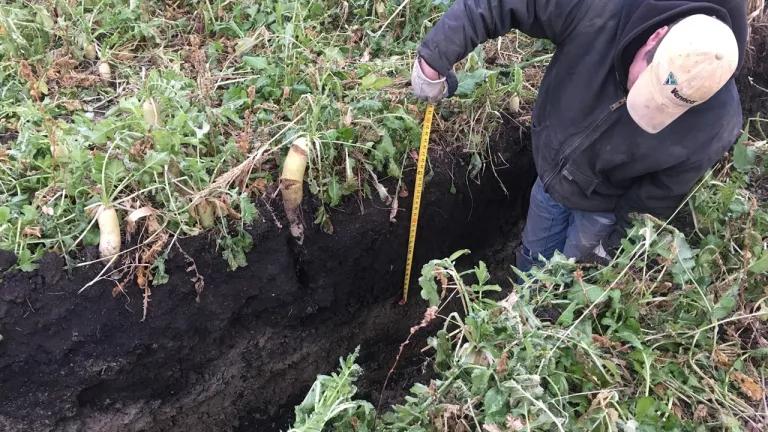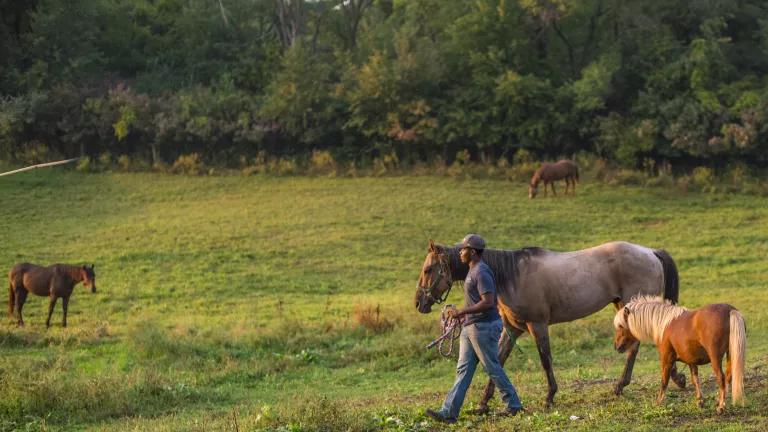CA's Water Resilience Portfolio Underdelivers on Soil Health

This past July, the Governor released his final Water Resilience Portfolio. In our comments to the draft portfolio, NRDC asked the Governor to think more holistically and creatively about soil health as a tool for increasing water conservation. Healthy soil can retain and store more water; water can more easily infiltrate healthy soil; and healthy soil can improve downstream water quality from the reductions in nutrient runoff and erosion. Unfortunately, the final portfolio underdelivered on soil health. There are only three specific actions that mention soil health as a strategy for building water resiliency, and those actions reflect efforts already underway. Additionally, for a strategy that emphasizes an integrative approach to water resiliency, investments in soil health are not integrated across the portfolio. It is disappointing that the soil health actions do not reflect the “complete reimagination of scale and scope” of water investments that Senator Stern and Secretary Crowfoot called for during Climate Action Week.
The portfolio presented an opportunity for the Administration to think creatively about water resiliency strategies. Instead of proposing new ideas, the three recommendations lean on existing soil health efforts. Action 16.1 calls for funding the Healthy Soils Program (HSP). Action 16.2 calls for creating incentives for on-farm conservation. Action 16.3 calls for supporting technical assistance (TA). The HSP is funded using money from the Greenhouse Gas Reduction Fund (GGRF), and the program provides incentives for on-farm conservation and funds technical assistance. Technically, these current state efforts give the Governor a green light to check all soil health related actions off the portfolio’s list.
This year, GGRF revenues are way down, and it’s unclear how much GGRF funding will be available for climate-mitigation projects starting January 2021. In other words, funding for the HSP is on the chopping block. The Administration and the Legislature must step up and not just preserve funding but increase funding to the HSP in future years. Increasing funding will help the program reap its full climate potential and make up for the lost soil carbon and water sequestration potential.
All three actions are listed under the “protect and enhance natural systems” section of the portfolio. There are no soil-related actions under the “Maintain and Diversify Water Supplies” section even though building healthy soil can increase natural water storage capacity on working lands; there are no actions that tie soil health metrics to water metrics under the “Build Connections” section even though water quality, use, and supply are tied to improvements in soil health; there are no actions tying improvements to soil health to preparedness in the “Be Prepared” section even though soil can be used as a means to help mitigate floods and store water on natural working lands during drought.
Overall, the portfolio fails to fully integrate soil health as a water resiliency strategy and provide any meaningful actions to expand investments in soil health. It’s a huge missed opportunity. We here at NRDC will continue breaking down departmental siloes and educating legislators and agency staff about the potential for soil health to be used as a tool to promote water conservation and improvements in water quality.




